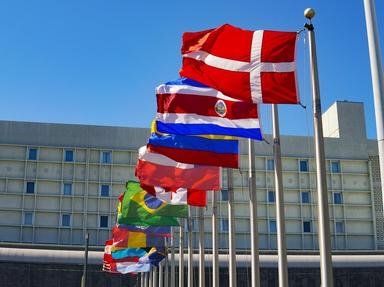
Sorting Stars Trivia Quiz
Stars are a popular symbol on national flags. Can you sort the given flags by the number of stars they display? Start with the one-star flag.
An ordering quiz
by wellenbrecher.
Estimated time: 3 mins.

| What's the Correct Order? | Choices |
| 1. (1 star) | Tuvalu |
| 2. | Burundi |
| 3. | Vietnam |
| 4. | Australia |
| 5. | Grenada |
| 6. | New Zealand |
| 7. | Venezuela |
| 8. | Cape Verde |
| 9. | China |
| 10. (10 stars) | Panama |